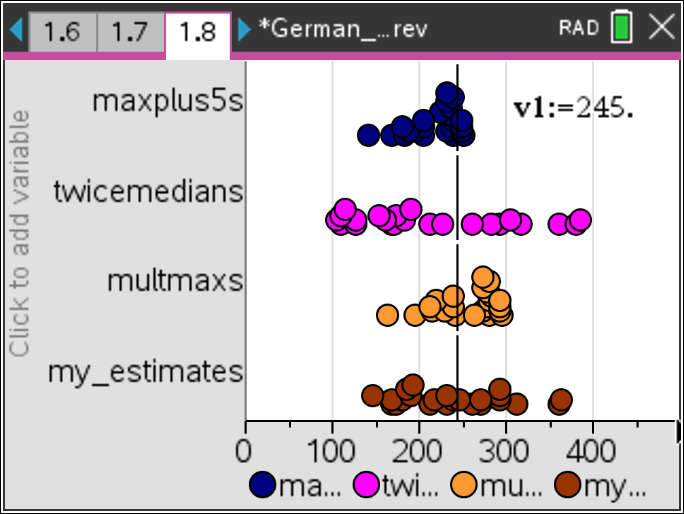German Tanks: Exploring Sampling Distributions

TI-Nspire™ CX
German Tanks: Exploring Sampling Distributions
In this lesson, students will estimate the largest number of a population based on random samples from the population, as statisticians did in WWII.
- Students will be able to interpret variability in the sampling distribution of a sample statistic.
- Students will evaluate the usefulness of a statistic by studying its sampling distribution.
- Students will be able to identify a biased estimator that results in predominantly over or under estimates of the population parameter.
- bias
- dotplot
- mean
- median
- maximum
- minimum
- parameter
- statistic
- variability
This lesson involves estimating the largest value from a population of consecutive numbers starting at 1.
As a result, students will:
- Create rules to estimate the largest number of a population based on random samples from the population.
- Analyze rules using graphs of the sampling distributions of a sample statistic.
- Analyze rules to determine an estimate of the largest value from a population.
TI-Nspire™ CX
Vernier EasyData,Vernier EasyLink and Vernier EasyTemp are registered trademarks of Vernier Science Education.

